Welcome to our guide to US birds that lay blue eggs. We’re going to get started with a table to help you get the info you’re looking for quick. If you feel like sticking around after that, we have much more info on each bird.
Reference Table
| Bird Species & Scientific Name | Image | Egg Image | Nesting Site | Clutch Size | Egg Description |
|---|---|---|---|---|---|
| American Robin* (Turdus migratorius) | 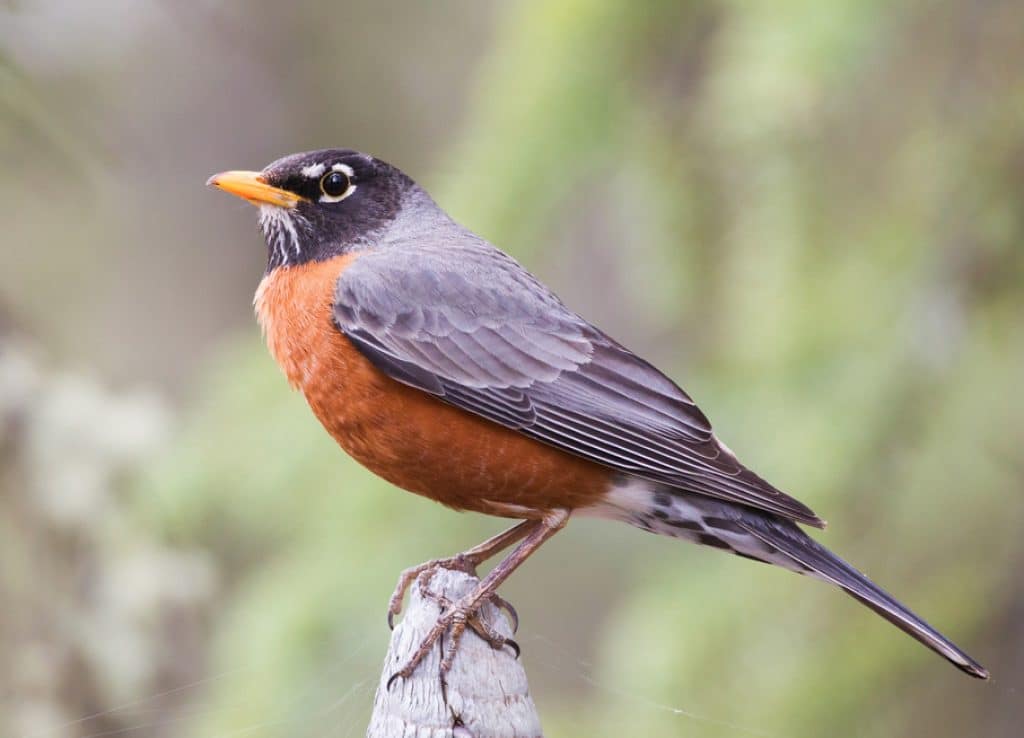 | 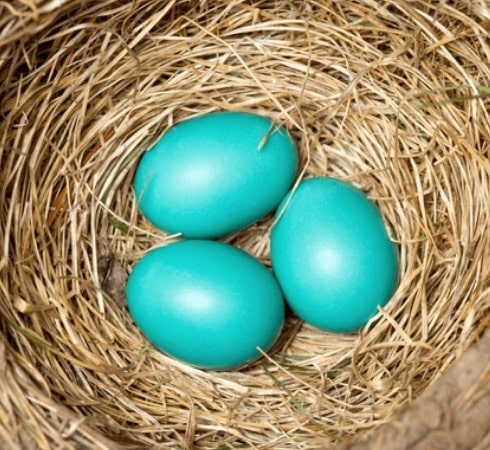 | Trees, shrubs, buildings | 3-5 eggs | Pale blue, unmarked. |
| Eastern Bluebird (Sialia sialis) | 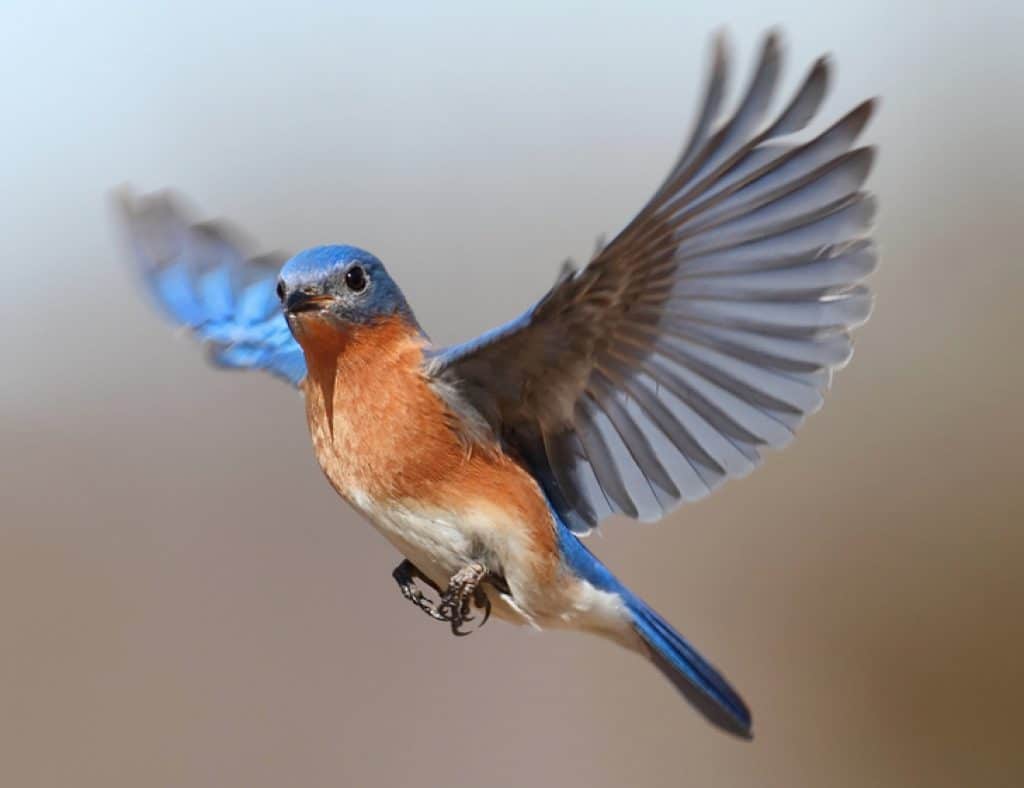 | 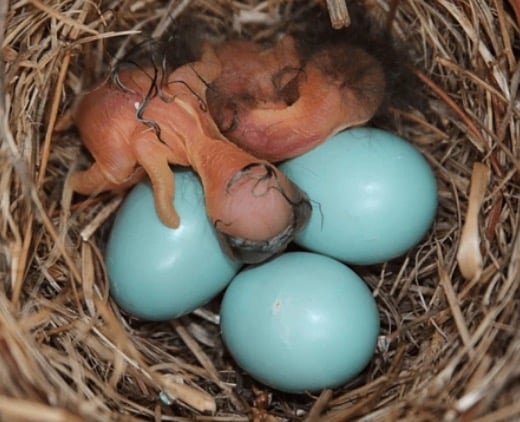 | Tree cavities, nest boxes | 4-5 eggs | Pale blue to light blue, unmarked. |
| Mountain Bluebird (Sialia currucoides) | 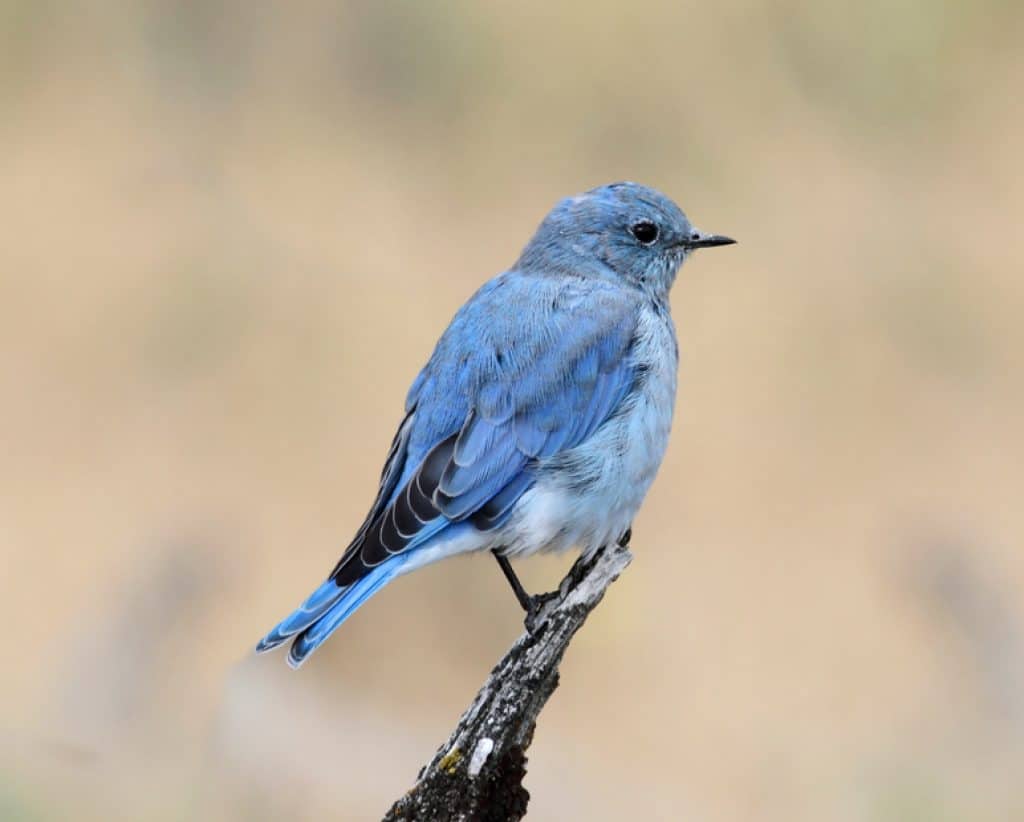 | 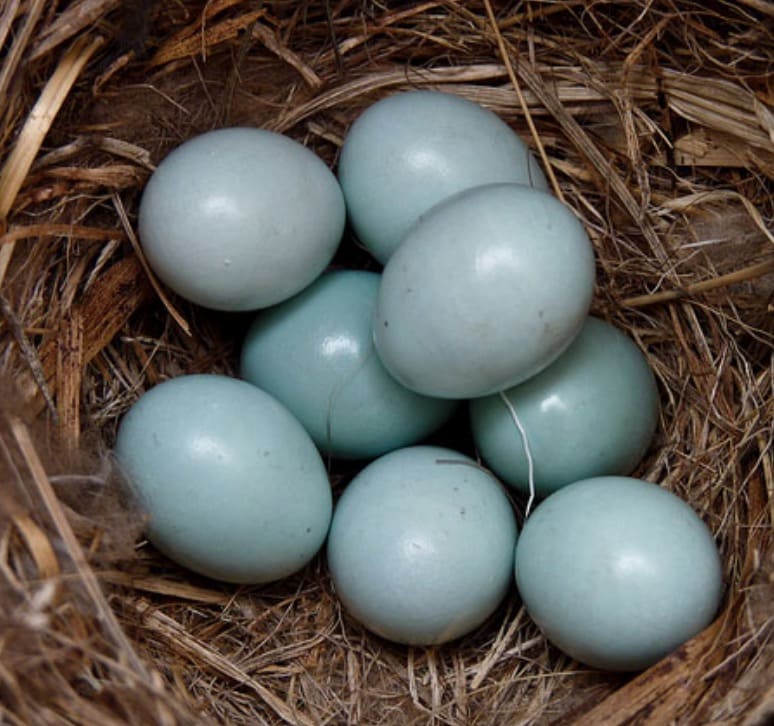 | Tree cavities, nest boxes, old woodpecker holes | 4-8 eggs | Light blue, sometimes unmarked. |
| Black-throated Blue Warbler (Setophaga caerulescens) | 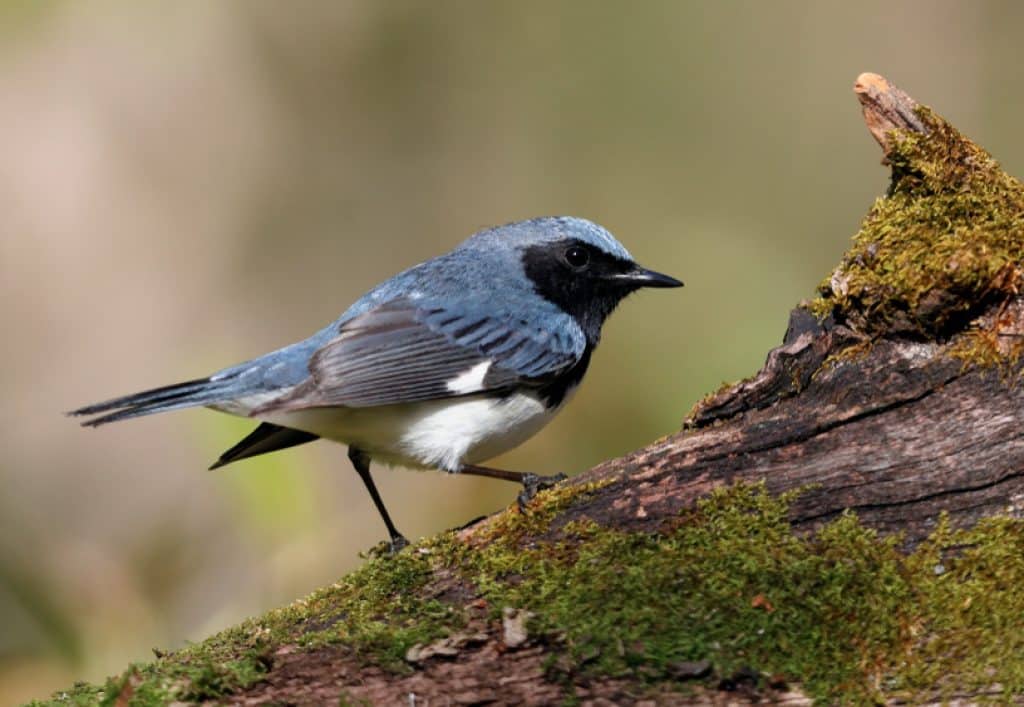 | 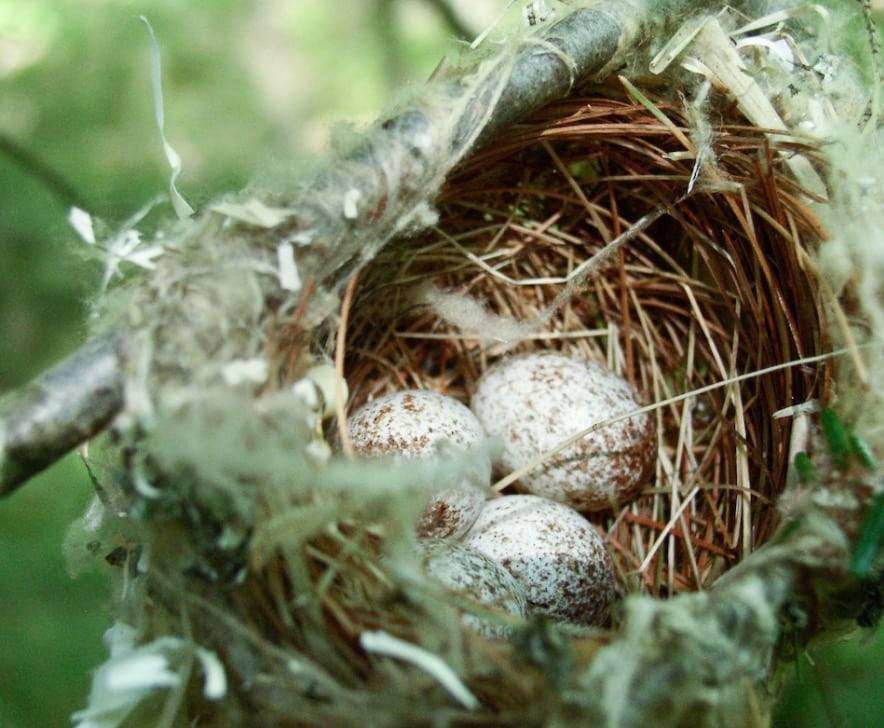 | Low in bushes or on ground | 3-5 eggs | White to pale blue, speckled with brown. |
| Starling (Sturnus vulgaris) | 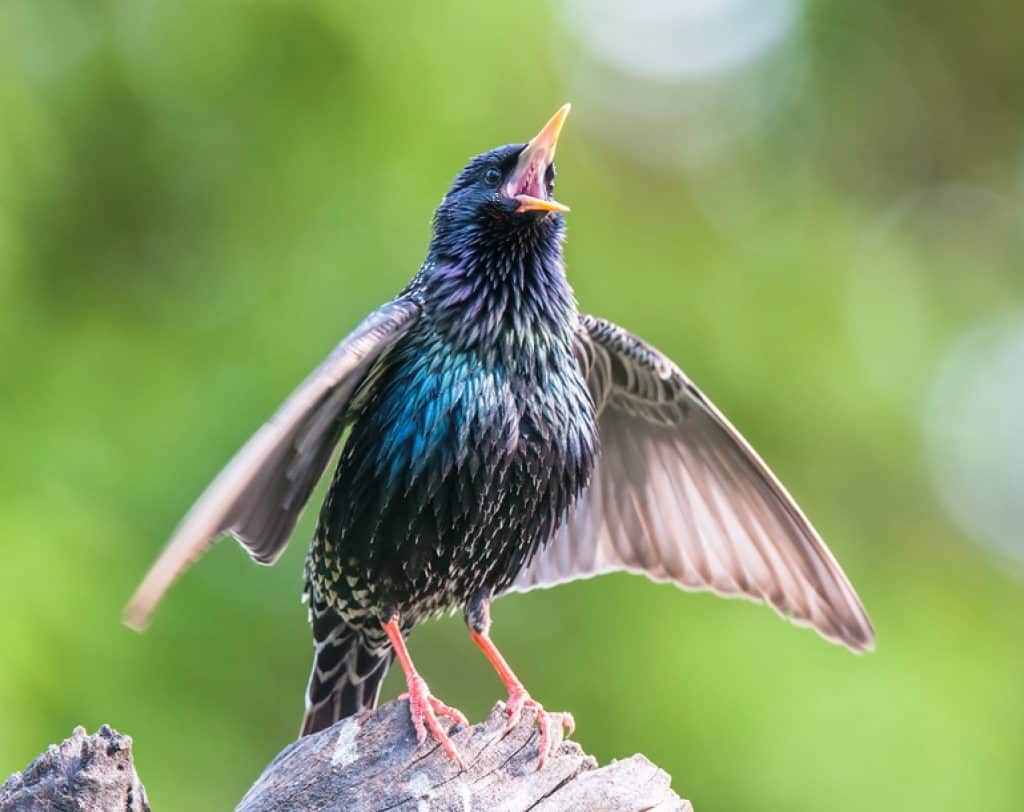 | 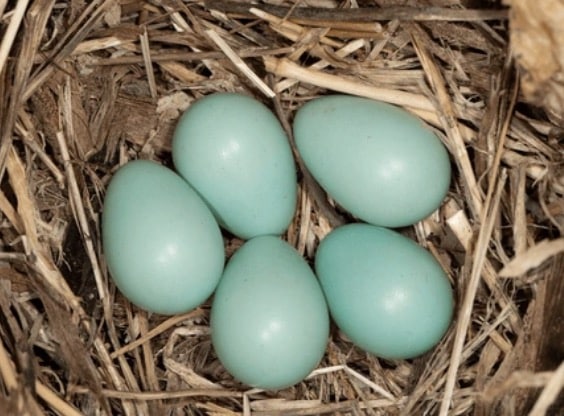 | Cavities in trees or buildings, nest boxes | 4-6 eggs | Pale blue, unmarked. |
| House Finch (Haemorhous mexicanus) | 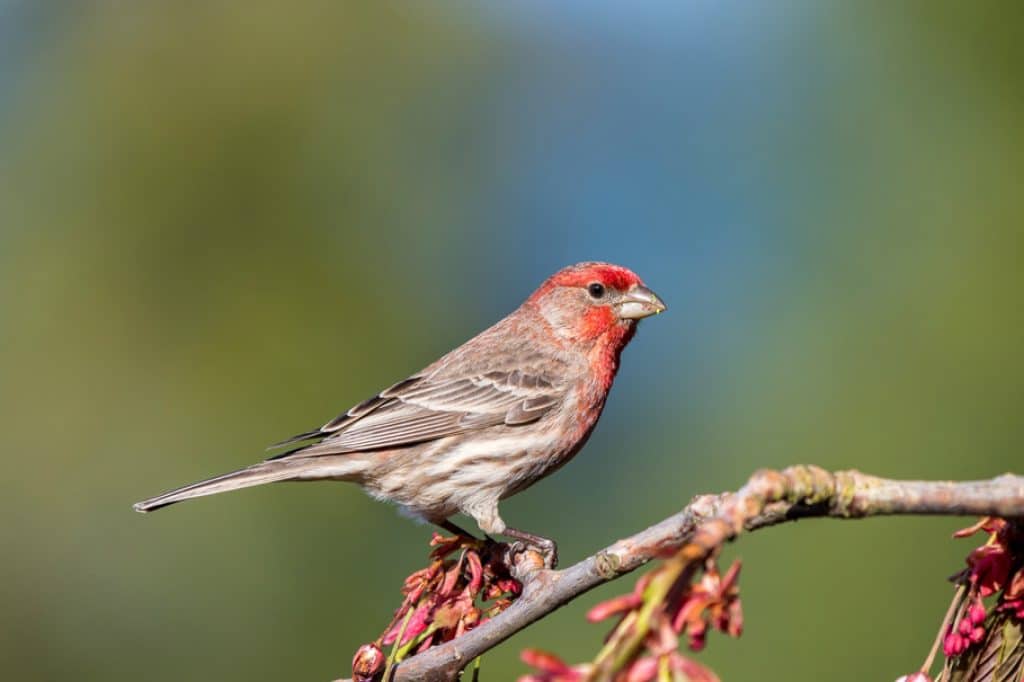 | 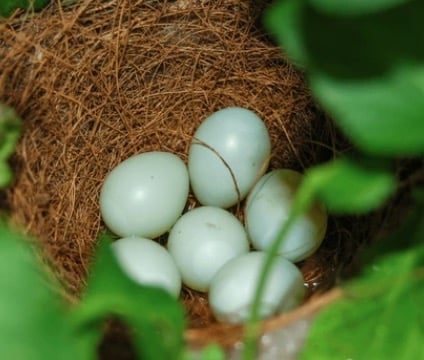 | Trees, shrubs, cactus, buildings | 2-6 eggs | Pale blue to white, sometimes speckled. |
| Blue Grosbeak (Passerina caerulea) | 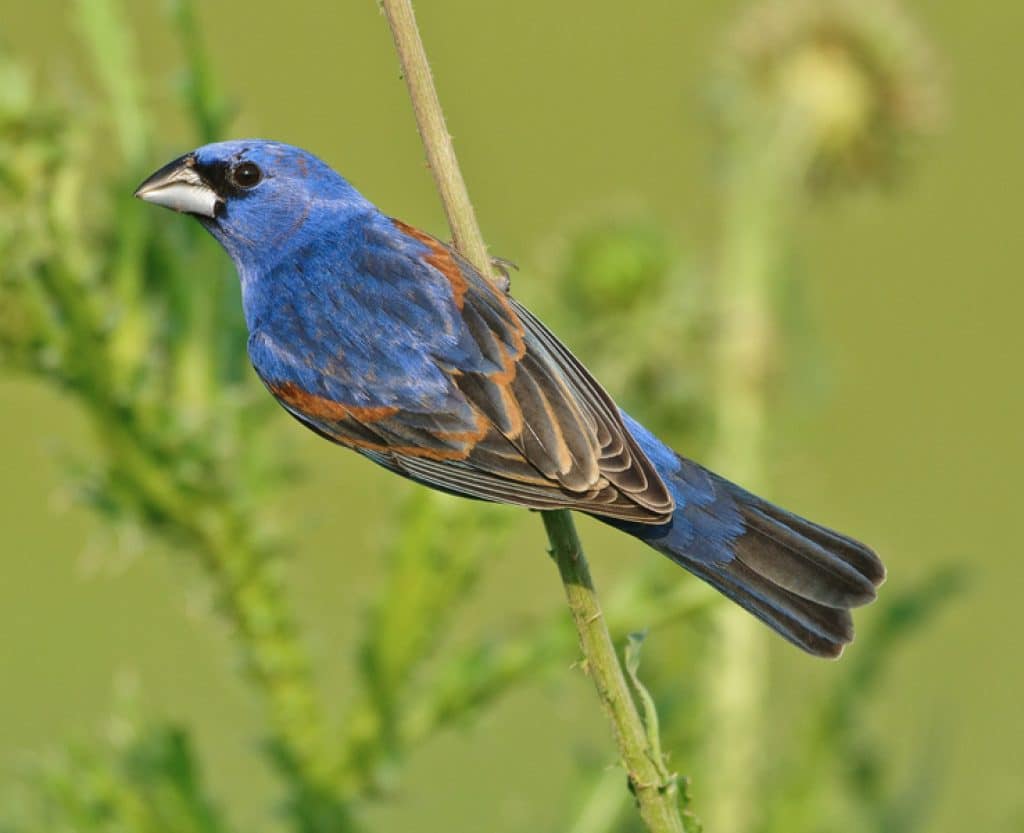 |  | Shrubs, trees, overgrown fields | 3-5 eggs | Pale blue to white, unmarked. |
| Red-winged Blackbird (Agelaius phoeniceus) | 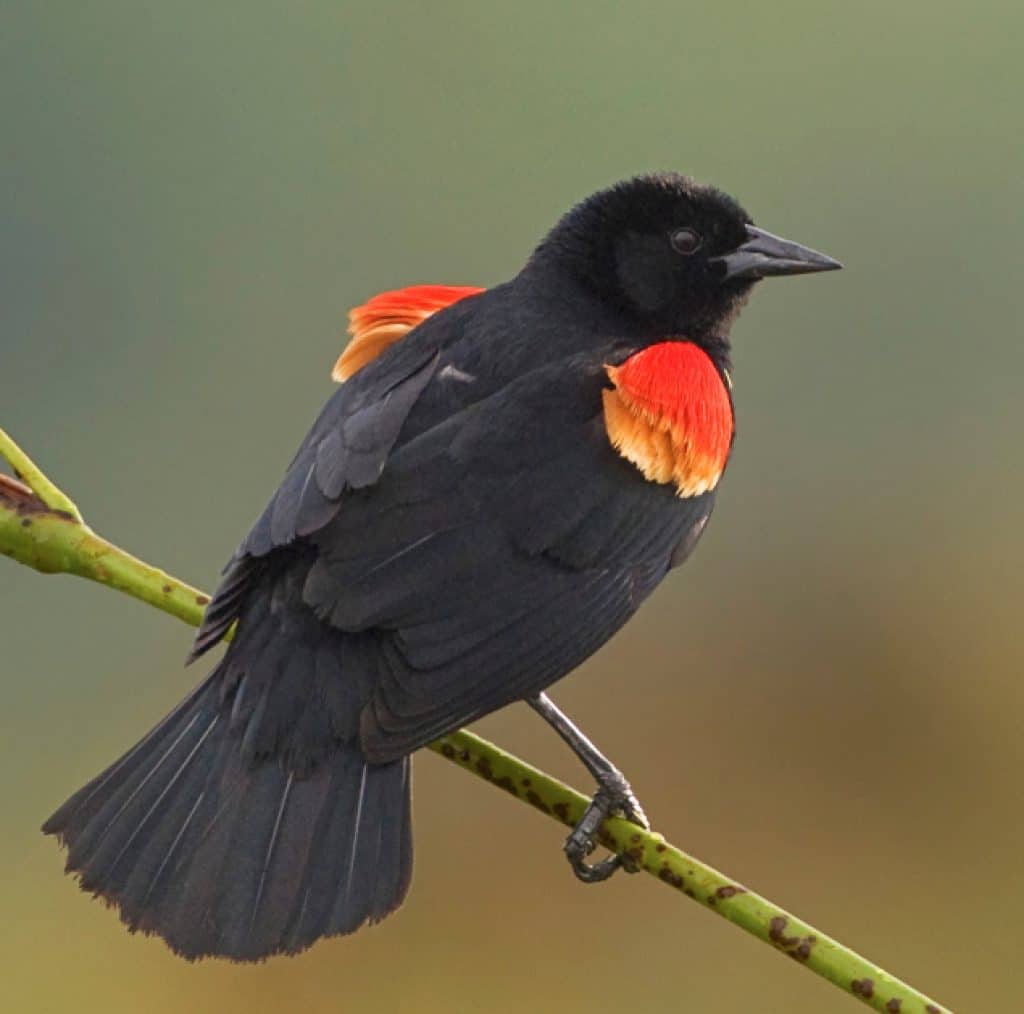 | 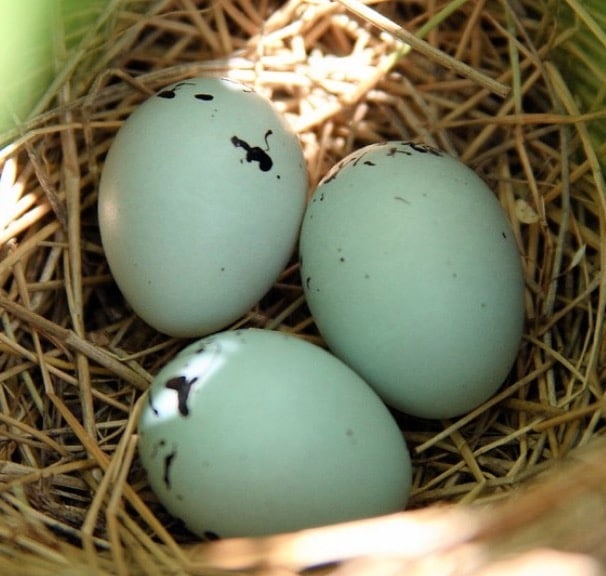 | Marsh vegetation, bushes | 2-4 eggs | Pale blue to greenish, often with speckles. |
| Western Scrub-Jay (Aphelocoma californica) | 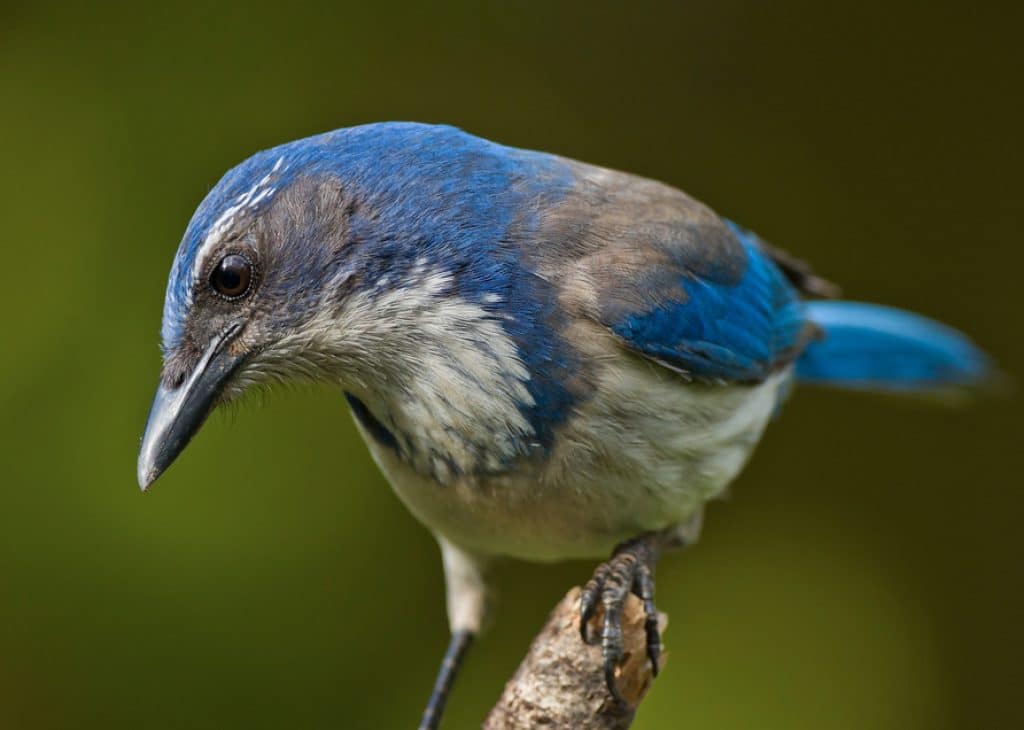 | 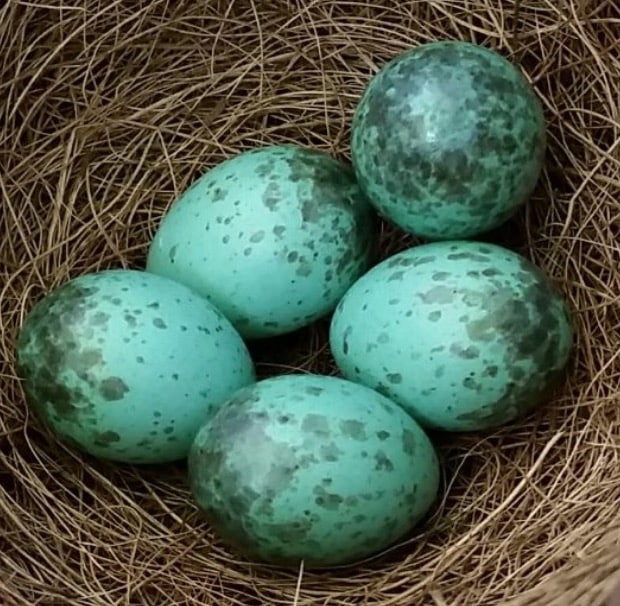 | Trees, shrubs | 3-6 eggs | Pale blue to greenish, spotted with brown. |
| Cedar Waxwing (Bombycilla cedrorum) | 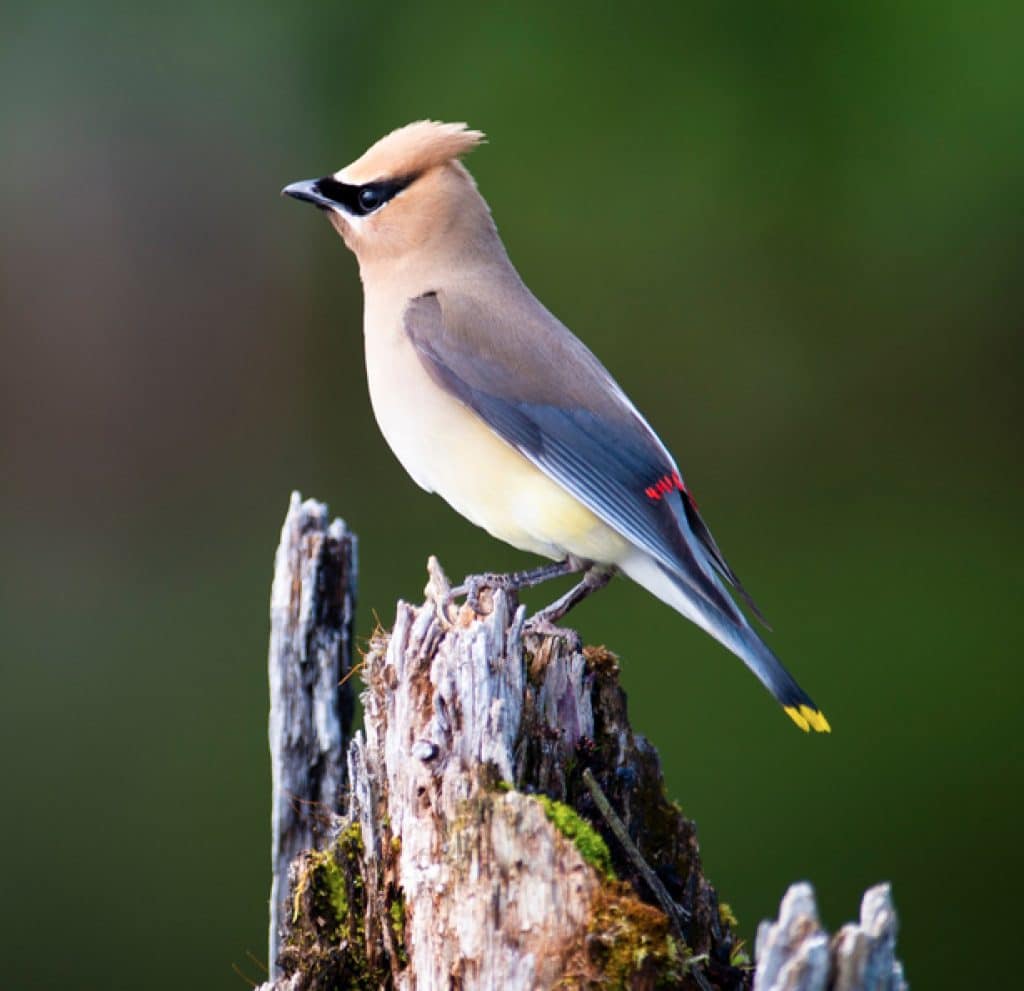 | 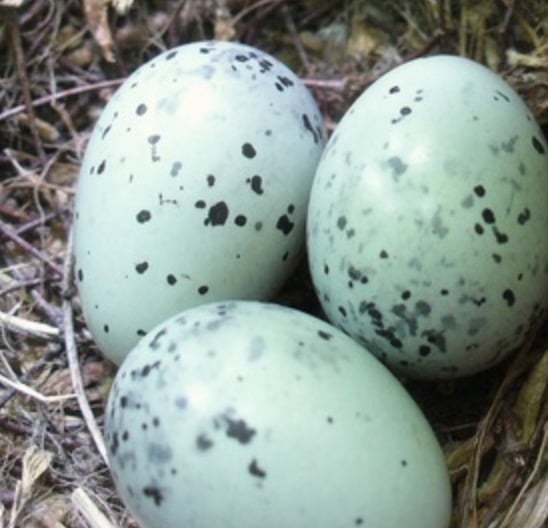 | Trees, shrubs | 4-6 eggs | Pale blue to blue-gray, often spotted or blotched. |
| Common Grackle (Quiscalus quiscula) | 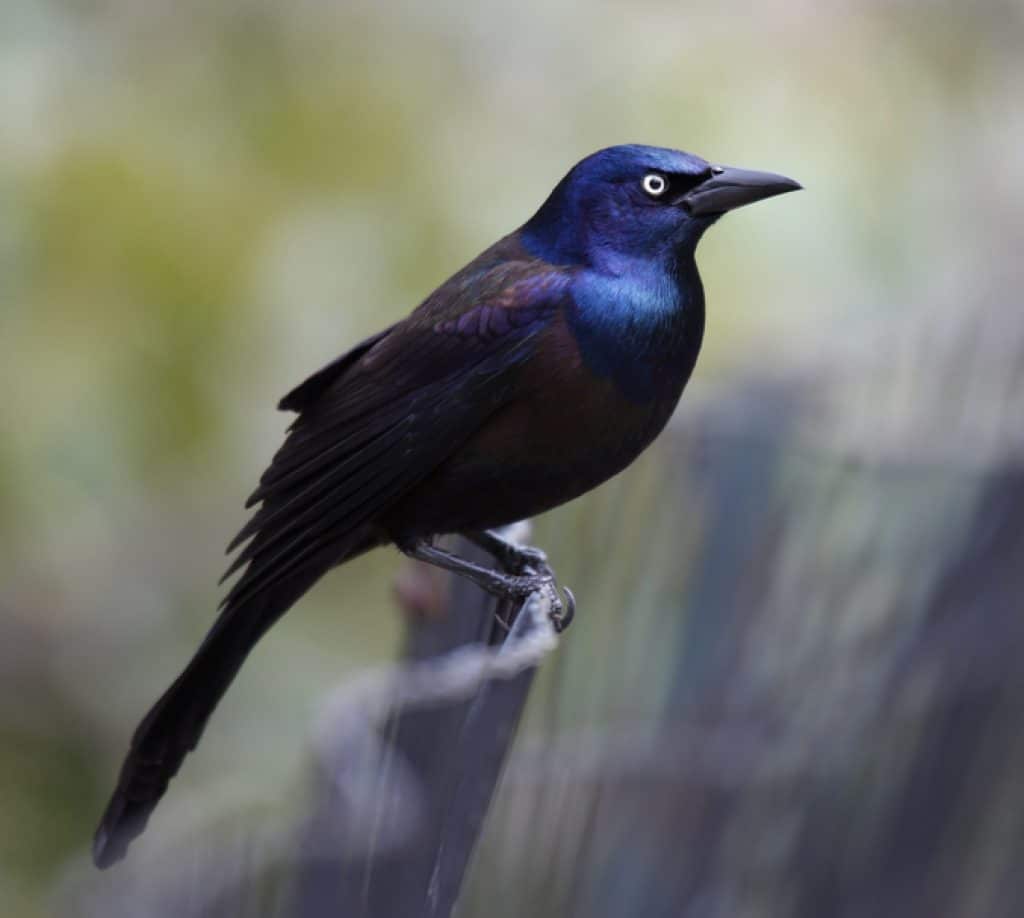 | 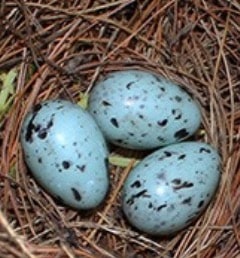 | Trees, shrubs, marsh vegetation | 4-7 eggs | Pale blue to greenish-blue, heavily speckled. |
Additional Information
- Nesting Site reveals the preferred locations for nest-building, which can vary widely from natural cavities to human-made structures.
- Clutch Size refers to the typical number of eggs laid in a single nesting attempt, indicating the potential reproductive output.
- Egg Description provides a brief overview of the color and sometimes the pattern found on the eggs, highlighting the diversity even within the characteristic blue egg coloration.
1. American Robin


Beginning our exploration of bird species that lay blue eggs, let’s revisit the American Robin (Turdus migratorius), a familiar sight across much of North America. Known for its beautiful song and vibrant red chest, the American Robin also has a distinct nesting and egg-laying behavior that endears it to many.
Identification
- Size and Shape: Medium-sized songbirds with a large, round body, long legs, and a straight, fairly long tail. Their silhouette is easily recognizable.
- Color Pattern: They have a distinctive orange or reddish breast, contrasting with their gray back, wings, and head. Both sexes look similar, though males tend to have slightly brighter coloring.
Behavior
- Feeding Habits: Robins are known for their diet of earthworms, often seen pulling worms from the soil. They also eat a wide variety of fruits and berries, adjusting their diet as the seasons change.
- Vocalizations: The song of the American Robin is a series of clear, melodious phrases, each consisting of a few notes, repeated several times. Their calls include a sharp, alarm-like “chirp.”
Habitat
- Preferred Habitats: American Robins are comfortable in a variety of habitats, including forests, gardens, parks, and urban areas. They are adaptable birds, often among the first to return to northern breeding grounds in spring.
Nesting Site and Egg Details
- Nesting Site: Robins build their nests in trees, shrubs, or on buildings, using grass, twigs, and mud. They prefer nesting sites that are elevated and provide a good vantage point.
- Clutch Size: Typically, 3-5 eggs are laid in each clutch.
- Egg Description: The eggs are a pale blue color, unmarked, and have a smooth, somewhat glossy surface.
Tips for Watching
- Attracting Robins: Providing a bird bath or a source of water can attract American Robins to your yard. Planting berry-producing bushes and trees can also encourage them to visit and stay.
- Observation Tips: Look for American Robins foraging on the ground in lawns, parks, and open fields. Early morning and late afternoon are great times to hear their beautiful song.
- Enjoy Their Presence: American Robins are a sign of the changing seasons, and their familiar song and appearance make them a beloved sight in many areas.
The American Robin’s bright plumage, cheerful song, and presence in backyards and wildlands alike make it a quintessential part of the North American landscape, embodying the spirit of spring and renewal. The iconic pale blue eggs of the American Robin are just one of the many fascinating aspects of this bird’s natural history.
2. Eastern Bluebird

For our second bird on the list, we turn our attention to the Eastern Bluebird (Sialia sialis), a cherished symbol of happiness and a harbinger of spring across much of North America.
Known for their brilliant blue plumage and sweet songs, these birds also contribute to the allure of blue eggs in the avian world. Let’s delve into the nesting habits and egg characteristics of the Eastern Bluebird:
Identification
- Size and Shape: Eastern Bluebirds are small to medium-sized birds with a plump body and a short bill. They have a round head and a short tail, with a silhouette that’s easily recognizable.
- Color Pattern: Males display a vivid blue back and wings with a rusty or reddish breast, while females have a more subdued blue-gray coloration with a hint of orange.
Behavior
- Feeding Habits: These birds are primarily insectivorous, though their diet also includes fruits and berries, especially outside the breeding season. They catch insects on the ground or in flight with agile maneuvers.
- Vocalizations: Their song is a series of soft, melodious warbles and churrs, which can be heard throughout their habitat, particularly during the breeding season.
Nesting Site and Clutch Details
- Nesting Site: Eastern Bluebirds favor tree cavities and nest boxes for their nesting sites, often in open or semi-open habitats. These locations provide protection from the elements and predators, making them ideal for raising their young.
- Clutch Size: Typically, Eastern Bluebirds lay a clutch of 4-5 eggs, though the number can vary depending on environmental conditions and food availability.
- Egg Description: Their eggs are a beautiful pale blue to light blue, unmarked, which contrasts elegantly against the nest’s interior. The eggs’ color can sometimes vary to white, though this is less common.
Tips for Watching and Attracting
- Attracting Eastern Bluebirds: Placing nest boxes in your yard or garden can attract Eastern Bluebirds, providing them with a suitable nesting site. Ensure the boxes are installed before the breeding season and in a location that mimics their natural nesting preferences.
- Observation Tips: Look for Eastern Bluebirds in open fields, along fence lines, or near wooded areas where they can find food and nesting sites. Early morning is an excellent time to observe them as they are most active.
- Enjoy Their Presence: Observing the Eastern Bluebird and its vibrant colors, listening to its song, and watching its behavior can be a deeply rewarding experience for bird enthusiasts and nature lovers alike.
The Eastern Bluebird’s choice of nesting sites and the stunning blue color of their eggs add to the charm of these beloved birds, making them a joyous addition to the ecosystems they inhabit.
3. Mountain Bluebird

The third bird on our list, the Mountain Bluebird (Sialia currucoides), elevates the beauty of blue eggs in nature with its own nesting habits.
This bird, known for its stunning azure plumage, thrives in the open country of the American West, from mountain meadows to sagebrush plains.
Identification
- Size and Shape: Mountain Bluebirds are relatively small, with a slender build and a straight, thin bill. They have a round head and a long tail, presenting an elegant profile.
- Color Pattern: Males are a vivid sky blue, covering most of their body, which becomes even more intense during the breeding season. Females are duller with hints of blue on the wings and tail, complemented by a grayish breast and back.
Behavior
- Feeding Habits: Primarily insectivores, Mountain Bluebirds catch insects in flight or forage for them on the ground. They also eat berries and seeds, especially during the colder months when insects are less abundant.
- Vocalizations: Their song is a soft, melodious warble, interspersed with short chirps and whistles. Their calls are a tender, mellow chur, used for communication between mates and signaling alarm.
Nesting Site and Clutch Details
- Nesting Site: They prefer nesting in tree cavities, old woodpecker holes, or nest boxes provided by conservationists and bird enthusiasts. These sites are typically found in open areas where these birds have easy access to flying insects.
- Clutch Size: Mountain Bluebirds lay a relatively large clutch, ranging from 4 to 8 eggs. The number can vary depending on environmental conditions and the availability of resources.
- Egg Description: Their eggs are usually a light blue, sometimes unmarked, blending beautifully with the serene landscapes they inhabit. On rare occasions, the eggs may be white, though this is less common.
Tips for Watching and Attracting
- Attracting Mountain Bluebirds: To attract these bluebirds, setting up nest boxes in open areas can be quite effective. Ensure the boxes are placed well before the breeding season to increase the chances of occupancy.
- Observation Tips: Spotting Mountain Bluebirds involves visiting open, natural areas where they are likely to forage and nest. Early mornings are ideal for observing these birds as they are most active.
- Enjoy Their Beauty: Watching Mountain Bluebirds can be a serene experience, as their brilliant blue plumage stands out against the natural landscapes they frequent. Their gentle songs add to the tranquil ambiance of their habitat.
The Mountain Bluebird’s nesting choices and the delicate color of their eggs contribute to the allure of this species, making them a fascinating subject for those interested in birdwatching and the natural world.
4. Black-throated Blue Warbler

For our fourth bird on the list, we explore the Black-throated Blue Warbler (Setophaga caerulescens), a small yet strikingly patterned songbird that adds a touch of elegance to the understory of eastern forests in North America.
Not only is this warbler admired for its distinctive appearance, but its nesting habits and the unique characteristics of its eggs also draw interest.
Identification
- Size and Shape: Black-throated Blue Warblers are compact, small birds with a relatively short tail and a thin, pointed bill, ideal for picking insects from foliage.
- Color Pattern: Males boast a vivid blue-black upper body with a stark white belly and a distinctive black face and throat. Females and juveniles are more subtly colored, with olive-brown upper parts and a pale underbelly, often showing a whitish eyebrow stripe.
Behavior
- Feeding Habits: These warblers are insectivores, feeding on a variety of small insects and spiders. They typically forage in the lower to mid-levels of forests, adeptly gleaning prey from leaves and branches.
- Vocalizations: Their song is a sweet, high-pitched and buzzy melody that’s easily recognizable once learned. Their calls include a soft “sip” sound, used for communication between individuals, especially in dense foliage.
Nesting Site and Clutch Details
- Nesting Site: Black-throated Blue Warblers nest low in bushes or occasionally directly on the ground, preferring dense thickets or the understory of deciduous forests. Their nests are well-concealed, built from grasses, leaves, and twigs, and lined with finer materials.
- Clutch Size: They typically lay a clutch of 3-5 eggs, though the number can vary depending on the availability of resources and environmental conditions.
- Egg Description: Their eggs are white to pale blue, beautifully speckled with brown, which helps camouflage them within the nest. The markings can vary, adding a unique character to each clutch.
Tips for Watching and Attracting
- Attracting Black-throated Blue Warblers: Creating a bird-friendly habitat with native plants and shrubs can attract these warblers, providing them with ample foraging opportunities and potential nesting sites.
- Observation Tips: To spot Black-throated Blue Warblers, focus on the understory of mature deciduous forests, especially during the breeding season. Listening for their distinctive song can help locate them.
- Appreciate Their Habitat: Observing these birds offers a chance to appreciate the complex ecosystem of the forest understory, highlighting the importance of conservation efforts to preserve these environments.
The Black-throated Blue Warbler’s distinctive nesting habits and the beautiful patterning of their eggs add an intriguing aspect to their already fascinating life history, making them a captivating subject for bird enthusiasts and conservationists alike.
5. Starling

For our fifth bird on the list, we delve into the world of the Starling (Sturnus vulgaris), a bird that evokes mixed feelings among birdwatchers and conservationists.
Originally from Eurasia, Starlings are now ubiquitous across North America, known for their iridescent plumage, complex vocalizations, and remarkable adaptability.
Their nesting habits and egg characteristics further illuminate the life of these resilient birds. Let’s explore the nesting site, clutch size, and egg description of the Starling:
Identification
- Size and Shape: Starlings are medium-sized birds with a short tail, pointed bill, and strong, stocky build. Their flight is direct and powerful, characterized by rapid wingbeats.
- Color Pattern: In the breeding season, adults have glossy black feathers with iridescent purple, green, and blue sheens. Their plumage is speckled with white or buff spots in the winter. Juveniles are duller, with a grey-brown coloration.
Behavior
- Feeding Habits: Starlings are omnivorous, feeding on a wide variety of insects, fruits, and seeds. They are known for their ability to extract insects from the ground with their strong bills, which they can open while probing soil.
- Vocalizations: One of the most remarkable aspects of Starlings is their vocal ability. They produce a wide range of sounds, from whistles to clicks and even mimicry of other birds’ songs and man-made noises.
Nesting Site and Clutch Details
- Nesting Site: Starlings are cavity nesters, taking advantage of cavities in trees or buildings, as well as readily using nest boxes. They often nest in colonies, and their ability to adapt to urban environments has facilitated their spread in North America.
- Clutch Size: The typical clutch size for Starlings ranges from 4-6 eggs, but can vary based on environmental conditions and the availability of resources.
- Egg Description: Starling eggs are pale blue and unmarked, presenting a simplistic beauty. The eggs’ color and lack of markings make them distinctive among cavity-nesting birds.
Tips for Watching and Attracting
- Attracting Starlings: While Starlings are generally abundant and may not need special efforts to attract, maintaining open areas with short grass can encourage them to forage. However, their aggressive nature towards other cavity nesters is a consideration for those managing birdhouses.
- Observation Tips: Starlings can be observed in a variety of environments, from urban centers to rural farmlands. Watching their feeding behavior and listening to their complex vocalizations can provide insight into their intelligence and social dynamics.
- Appreciating Their Adaptability: Despite their reputation as pests in some areas, Starlings’ adaptability and survival skills are remarkable. Observing them offers a chance to appreciate the complexities of ecological interactions and the challenges of managing invasive species.
The Starling, with its pale blue eggs and versatile nesting habits, embodies the resilience and adaptability of the avian world, reminding us of the intricate balance between native and introduced species in our ecosystems.
6. House Finch

For our sixth bird on the list, we turn our attention to the House Finch (Haemorhous mexicanus), a common and adaptable songbird that has flourished in urban and suburban environments across North America.
Originating from the western United States and Mexico, these finches have become a familiar sight at bird feeders and gardens, noted for their cheerful song and social behavior.
Their nesting habits and the appearance of their eggs offer a glimpse into the life of these resilient birds. Let’s explore the House Finch’s nesting site, clutch size, and egg description:
Identification
- Size and Shape: House Finches are small birds with a stout body, relatively large beak, and a short to medium-length tail. Their build is typical of finches, designed for seed consumption.
- Color Pattern: Males are recognizable by their red, orange, or yellow breast and head, which contrasts with their brownish wings and back. Females lack the bright colors, presenting a more uniform brown and streaked appearance.
Behavior
- Feeding Habits: Primarily seed eaters, House Finches also consume fruits and occasionally insects. They are frequent visitors to bird feeders, where they enjoy sunflower seeds, millet, and other seed mixes.
- Vocalizations: Their song is a long, jumbled series of warbles and chirps, which can be heard throughout the year. The males sing to attract females and to mark their territory.
Nesting Site and Clutch Details
- Nesting Site: House Finches are versatile in their choice of nesting sites, using trees, shrubs, cactus, ledges, and buildings. They often nest in close proximity to humans, utilizing nooks and crannies on buildings and other structures.
- Clutch Size: They typically lay a clutch of 2-6 eggs, but the size can vary based on environmental conditions and availability of food.
- Egg Description: Their eggs range from pale blue to white and are sometimes lightly speckled with fine, dark marks. The variation in egg color and markings adds a subtle beauty to their nests.
Tips for Watching and Attracting
- Attracting House Finches: Providing a variety of seeds in feeders can attract House Finches to your yard. They are particularly fond of sunflower seeds and can become regular visitors if food is consistently available.
- Observation Tips: Look for House Finches in areas where food is readily available, such as bird feeders, flowering plants, and fruiting trees. Their social nature often leads them to feed in groups.
- Appreciate Their Adaptability: Observing House Finches offers an opportunity to appreciate how wildlife can adapt to urban and suburban environments. Their presence highlights the importance of creating bird-friendly spaces in our communities.
The House Finch, with its adaptable nesting habits and colorful presence, brings a touch of wildness to our everyday surroundings, reminding us of the joy and beauty that nature, even in its most common forms, adds to our lives.
7. Blue Grosbeak

For our seventh bird on the list, we explore the Blue Grosbeak (Passerina caerulea), a striking songbird known for its deep blue plumage and robust singing voice.
This species is often found in the warmer regions of North America, thriving in habitats that offer a blend of dense cover and open space for foraging.
The nesting habits and egg characteristics of the Blue Grosbeak reveal the adaptability and resilience of this beautiful bird. Let’s delve into the details of the Blue Grosbeak’s nesting site, clutch size, and egg description:
Identification
- Size and Shape: Blue Grosbeaks are medium-sized songbirds with a large, conical bill characteristic of seed-eaters. They have a stocky build and a relatively short tail, with a broad and rounded silhouette.
- Color Pattern: Males are vibrant blue with two chestnut wing bars that add contrast to their plumage. Females and immature birds are mostly brown with hints of blue on their wings and tail, and may also show the wing bars.
Behavior
- Feeding Habits: These birds have a varied diet that includes insects, seeds, and grains. They forage both on the ground and in vegetation, using their strong bills to crack open seeds and capture insects.
- Vocalizations: The Blue Grosbeak’s song is a rich, melodious series of notes and trills. They also have a distinctive sharp “chink” call, used for communication and alerting others to potential danger.
Nesting Site and Clutch Details
- Nesting Site: Blue Grosbeaks nest in a variety of low-lying dense vegetation, including shrubs, trees, and overgrown fields. They prefer sites that offer some concealment from predators, often choosing locations on the edge of clearings or in brushy areas.
- Clutch Size: The typical clutch size for Blue Grosbeaks ranges from 3-5 eggs, allowing for a successful breeding season if conditions are favorable.
- Egg Description: Their eggs are a beautiful pale blue to white, unmarked, presenting a simple yet elegant appearance. The lack of markings on the eggs is characteristic of many bird species in open or semi-open nesting sites.
Tips for Watching and Attracting
- Attracting Blue Grosbeaks: Creating a habitat with a mix of dense shrubs and open areas can attract Blue Grosbeaks. Planting native vegetation that produces seeds and attracts insects can also provide foraging opportunities for these birds.
- Observation Tips: To spot Blue Grosbeaks, visit open or semi-open habitats with ample shrubby vegetation during the breeding season. Early morning is often the best time to hear their song and see them foraging or perched in the open.
- Enjoy Their Presence: The sight of a male Blue Grosbeak in full plumage can be breathtaking. Observing these birds offers a reminder of the diversity and beauty of avian life, and the importance of conserving the habitats they rely on.
The Blue Grosbeak, with its distinctive coloring, strong voice, and elegant eggs, adds a splash of color and song to the landscapes it inhabits, enriching the biodiversity and aesthetic beauty of its environment.
8. Tree Swallow
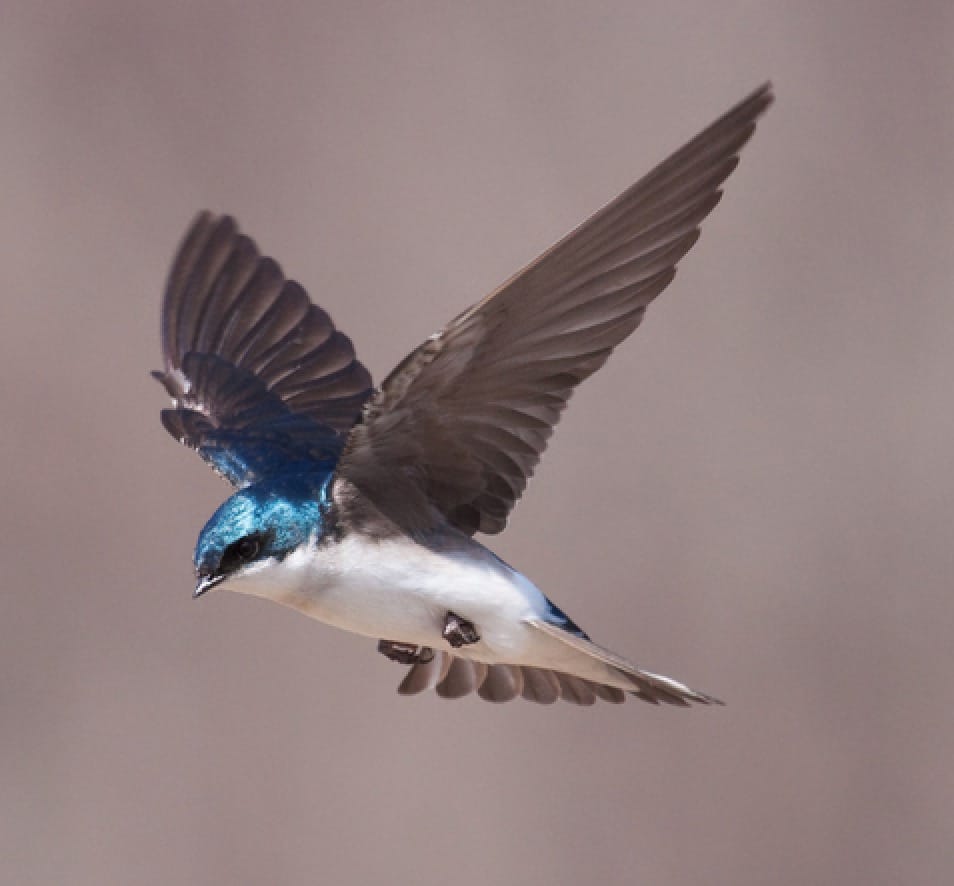
For our eighth bird on the list, we turn our focus to the Tree Swallow (Tachycineta bicolor), a graceful and agile flyer that captivates observers with its iridescent blue-green upperparts and clean, white underparts.
These birds are a common sight across North America, especially near bodies of water, where they perform aerial acrobatics to catch insects.
The Tree Swallow’s nesting habits and the characteristics of its eggs offer insight into the life of this beloved bird. Let’s explore the Tree Swallow’s nesting site, clutch size, and egg description:
Identification
- Size and Shape: Tree Swallows are small, sleek birds with long, pointed wings and a short, squared or slightly notched tail. Their streamlined body is built for speed and agility in flight.
- Color Pattern: Males exhibit a striking blue-green iridescence on their back and head, contrasting with their pure white underparts. Females have a similar color pattern but may be slightly duller.
Behavior
- Feeding Habits: Tree Swallows feed almost exclusively on insects, which they catch in mid-air with remarkable precision. Their diet includes flies, beetles, and mosquitoes, making them beneficial for controlling insect populations.
- Vocalizations: Their vocalizations include a variety of chirps, twitters, and warbles, used for communication within flocks and between mates. The sounds of a Tree Swallow colony can be quite lively and are a hallmark of their nesting sites.
Nesting Site and Clutch Details
- Nesting Site: Tree Swallows nest in tree cavities or nest boxes, often placed near water. They have adapted well to human-made nesting structures, which has helped increase their breeding success in many areas.
- Clutch Size: They typically lay a clutch of 4-7 eggs. The number of eggs can vary depending on environmental conditions and the availability of food resources.
- Egg Description: Tree Swallow eggs range from pure white to pale blue, unmarked, presenting a simple yet striking appearance in the nest. The variation in egg color is a characteristic feature of this species.
Tips for Watching and Attracting
- Attracting Tree Swallows: Installing nest boxes near open areas with access to water can attract Tree Swallows. Ensuring the boxes are clean and ready before the breeding season begins will increase the chances of occupancy.
- Observation Tips: To observe Tree Swallows, visit open fields, wetlands, or lakeshores, where they are likely to be feeding or nesting. Watching them swoop and dive to catch insects is a delightful sight.
- Enjoy Their Aerobatics: The flight of the Tree Swallow is both graceful and energetic. Observing these birds in action offers a chance to appreciate the beauty of avian movement and the complexity of aerial feeding behaviors.
The Tree Swallow, with its dazzling plumage, aerial prowess, and elegant eggs, is a testament to the beauty and adaptability of avian life.
Observing these birds provides a window into the dynamic interactions between species and their environments, highlighting the importance of preserving natural habitats and water sources.
9. Red-winged Blackbird

For our ninth bird on the list, we revisit the Red-winged Blackbird (Agelaius phoeniceus), a familiar and striking presence in wetlands, marshes, and agricultural fields across North America.
Known for the males’ distinctive red and yellow shoulder patches and their bold, musical calls, these birds play a significant role in their ecosystems as both seed dispersers and predators of insects.
The nesting habits of the Red-winged Blackbird and the appearance of their eggs provide insight into the reproductive strategies that contribute to their widespread success.
Identification
- Size and Shape: Red-winged Blackbirds are medium-sized birds with a stocky build, a sharp, pointed bill, and a broad tail. Males are larger and more brightly colored than females.
- Color Pattern: Males are unmistakable with their glossy black plumage and vibrant red and yellow shoulder epaulets. Females are more cryptically colored, with a streaky brown, sparrow-like appearance that provides camouflage in their nesting habitat.
Behavior
- Feeding Habits: These birds are omnivorous, feeding on a diet that includes insects, seeds, and grains. They are often seen foraging in flocks, especially outside the breeding season, taking advantage of the abundant food resources in their varied habitats.
- Vocalizations: The male Red-winged Blackbird’s song is a rich, conk-la-ree! that can be heard across wetlands and fields, serving as both a territorial claim and an attractant for females.
Nesting Site and Clutch Details
- Nesting Site: Red-winged Blackbirds prefer to nest in dense wetland vegetation, including cattails, rushes, and grasses, often building their nests directly over water. This habitat choice provides protection from predators and easy access to food.
- Clutch Size: They typically lay a clutch of 3-5 eggs, although the number can vary depending on the availability of resources and environmental conditions.
- Egg Description: Their eggs are pale blue to greenish, marked with streaks and spots of brown and purple. The markings help camouflage the eggs within the nest, providing an additional layer of protection from predators.
Tips for Watching and Attracting
- Observation Tips: To observe Red-winged Blackbirds, visit local wetlands, marshes, or the edges of lakes and ponds, especially during the breeding season when males are most vocal and visible. Binoculars can be helpful for spotting females in the dense vegetation of their nesting sites.
- Enjoy Their Displays: The male Red-winged Blackbird’s display, involving the spreading of its wings to show off the bright shoulder patches, coupled with its distinctive song, is a spectacle of nature that highlights the complexities of avian communication and mating strategies.
10. Western Scrub Jay

For our tenth bird featuring species that lay blue eggs, let’s examine the Western Scrub-Jay (Aphelocoma californica), now more commonly referred to in studies as the California Scrub-Jay following a split from what was formerly known collectively as the Western Scrub-Jay.
This bird, known for its striking blue and gray plumage and bold personality, is a fixture in western North America’s scrub and oak woodlands.
The nesting habits of the California Scrub-Jay and the characteristics of their eggs highlight the adaptability and resilience of this intelligent species.
Identification
- Size and Shape: California Scrub-Jays are medium-sized, with a robust body, a large head, a long, thick bill, and a long tail. Their build reflects their omnivorous diet and varied foraging techniques.
- Color Pattern: They feature bright blue upperparts, with a white underbelly and a grayish back and breast. The throat is white, bordered with a blue necklace. This contrast of colors makes them easily identifiable in their habitats.
Behavior
- Feeding Habits: California Scrub-Jays are omnivores, eating a wide range of foods including insects, seeds, fruits, and nuts. They are also known to eat small animals and eggs. Their strong bills allow them to exploit a variety of food sources, including acorns, which they often cache for later use.
- Vocalizations: Their calls are varied but include harsh, screeching calls that are used to communicate with other jays and announce their presence. They are also known for their intelligence and complex social behaviors.
Nesting Site and Clutch Details
- Nesting Site: These jays prefer to nest in a variety of shrubs, trees, and sometimes even on man-made structures. They choose sites that offer some degree of cover to protect against predators, often within dense shrubbery or low in trees.
- Clutch Size: The clutch typically consists of 3-5 eggs, although this can vary depending on environmental conditions and food availability.
- Egg Description: Their eggs are pale blue to greenish, sometimes unmarked, providing a simple yet striking appearance. The eggs’ coloration blends well with the dappled light of their woodland and scrubland habitats.
Tips for Watching and Attracting
- Observation Tips: To observe California Scrub-Jays, visit open woodlands, chaparral, and suburban areas where these birds are active. They are often seen foraging on the ground or perched conspicuously on shrubs and trees.
- Attracting California Scrub-Jays: While they are naturally drawn to areas with oak trees due to their acorn diet, providing a source of water and planting native shrubs and trees can also attract these jays to your yard.
- Enjoy Their Presence: Watching California Scrub-Jays can be rewarding due to their curious nature and striking appearance. Their interactions and caching behaviors offer insights into the complex behaviors of corvids, a family known for its intelligence.
11. Song Sparrow
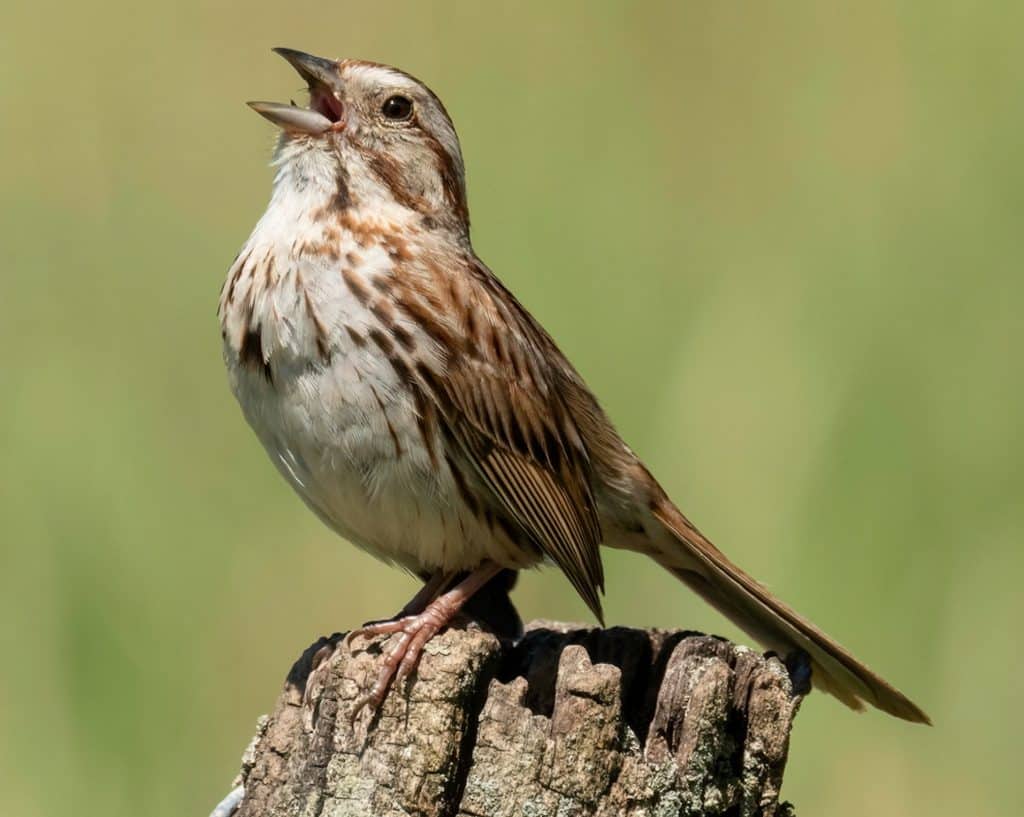
For our eleventh bird on the list exploring species that lay blue eggs, we focus on the Cedar Waxwing (Bombycilla cedrorum), a sleek and elegant bird known for its soft, silky plumage and unique red wingtips resembling sealing wax.
Cedar Waxwings are social birds, often seen in large flocks, particularly in areas with abundant fruit. Their love for berries is well-documented, making them a delight to observe in both urban and wild landscapes. Let’s delve into the Cedar Waxwing’s nesting site, clutch size, and egg description:
Identification
- Size and Shape: Cedar Waxwings are medium-sized birds with a crest that often lies flat on their heads, giving them a sleek appearance. They have a short, wide bill and a smooth, rounded tail typically tipped with a yellow band.
- Color Pattern: Their plumage is primarily a soft, pale brown on the head and chest, transitioning to a brighter yellow on the belly. The wings are black with a thin white line and distinctive red wax-like tips on the secondary feathers. The tail is gray with a yellow tip, and they have a black mask across their eyes, adding to their masked bandit appearance.
Behavior
- Feeding Habits: Cedar Waxwings are predominantly fruit eaters, consuming a wide variety of berries and fruit from trees and shrubs. During the breeding season, they also feed on insects, which they catch in mid-air with impressive agility.
- Vocalizations: Their calls are high-pitched, trilling sounds, often heard when they are in flight or while foraging in groups. Their vocalizations contribute to the cohesive social structure of flocks.
Nesting Site and Clutch Details
- Nesting Site: Cedar Waxwings nest in trees or shrubs, often near water. They are not highly territorial about their nesting sites, focusing more on the availability of food sources nearby. The nest is an open cup made of grass and twigs, sometimes lined with softer materials.
- Clutch Size: They typically lay a clutch of 3-5 eggs, but the number can vary depending on environmental factors and the abundance of food.
- Egg Description: Cedar Waxwing eggs are pale blue to gray, sometimes lightly spotted or unmarked, blending well with the natural environment of their nest.
Tips for Watching and Attracting
- Observation Tips: Look for Cedar Waxwings in areas with abundant berry-producing trees and shrubs. They are often heard before they are seen, so listening for their distinctive calls can lead to successful sightings.
- Attracting Cedar Waxwings: Planting native berry-producing plants in your garden can attract Cedar Waxwings. They are particularly drawn to fruit-bearing plants in both winter and summer, making them year-round visitors in some areas.
- Enjoy Their Social Behavior: Observing the social dynamics of Cedar Waxwing flocks can be fascinating. Their communal feeding and care for each other provide insight into their complex social interactions.
The Cedar Waxwing, with its elegant appearance, social nature, and preference for berries, is a captivating sight in the natural world. Their unique features and behaviors, combined with the subtle beauty of their eggs, underscore the diversity and complexity of avian life.
12. Cedar Waxing
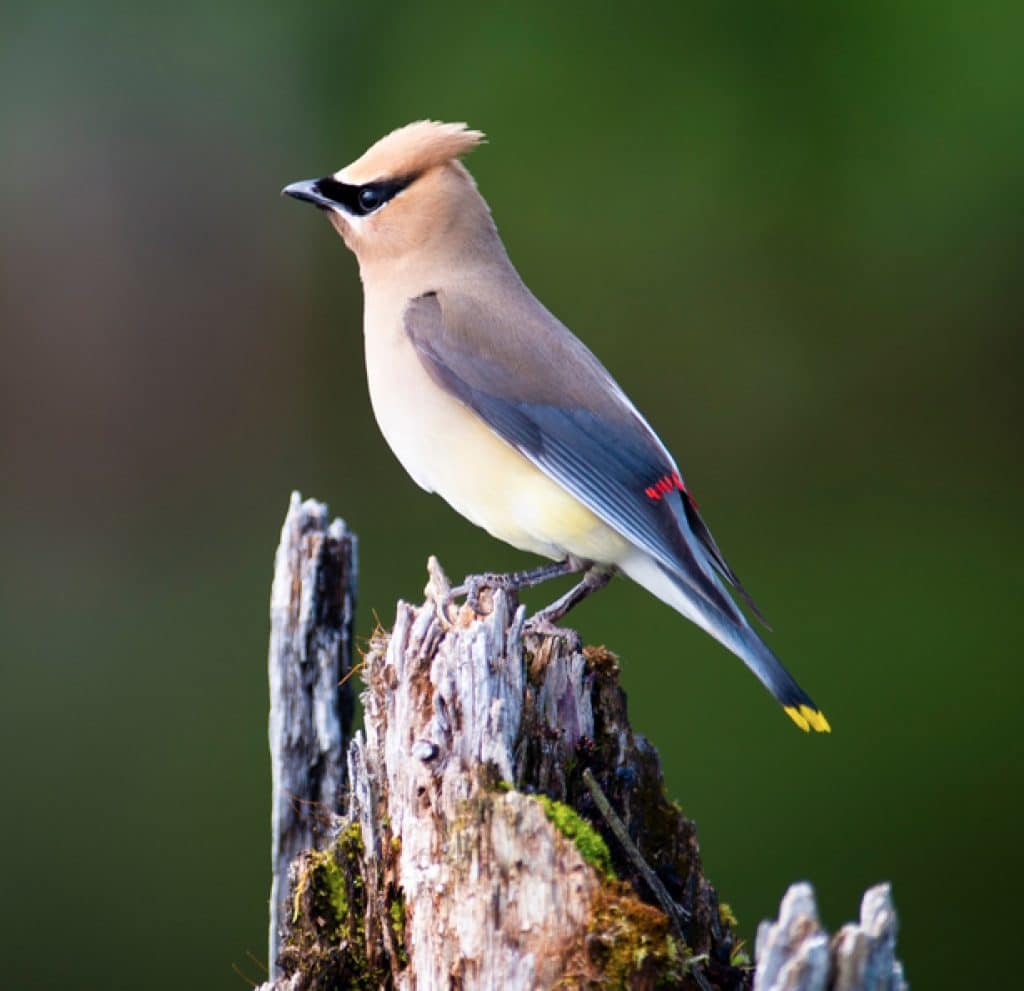
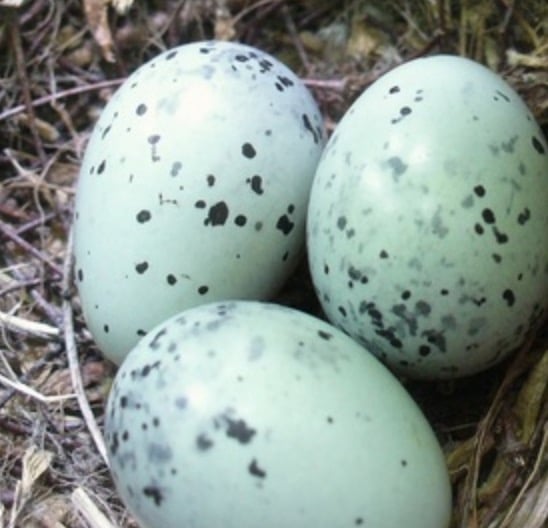
For our eleventh bird on the list exploring species that lay blue eggs, we focus on the Cedar Waxwing (Bombycilla cedrorum), a sleek and elegant bird known for its soft, silky plumage and unique red wingtips resembling sealing wax.
Cedar Waxwings are social birds, often seen in large flocks, particularly in areas with abundant fruit.
Their love for berries is well-documented, making them a delight to observe in both urban and wild landscapes. Let’s delve into the Cedar Waxwing’s nesting site, clutch size, and egg description:
Identification
- Size and Shape: Cedar Waxwings are medium-sized birds with a crest that often lies flat on their heads, giving them a sleek appearance. They have a short, wide bill and a smooth, rounded tail typically tipped with a yellow band.
- Color Pattern: Their plumage is primarily a soft, pale brown on the head and chest, transitioning to a brighter yellow on the belly. The wings are black with a thin white line and distinctive red wax-like tips on the secondary feathers. The tail is gray with a yellow tip, and they have a black mask across their eyes, adding to their masked bandit appearance.
Behavior
- Feeding Habits: Cedar Waxwings are predominantly fruit eaters, consuming a wide variety of berries and fruit from trees and shrubs. During the breeding season, they also feed on insects, which they catch in mid-air with impressive agility.
- Vocalizations: Their calls are high-pitched, trilling sounds, often heard when they are in flight or while foraging in groups. Their vocalizations contribute to the cohesive social structure of flocks.
Nesting Site and Clutch Details
- Nesting Site: Cedar Waxwings nest in trees or shrubs, often near water. They are not highly territorial about their nesting sites, focusing more on the availability of food sources nearby. The nest is an open cup made of grass and twigs, sometimes lined with softer materials.
- Clutch Size: They typically lay a clutch of 3-5 eggs, but the number can vary depending on environmental factors and the abundance of food.
- Egg Description: Cedar Waxwing eggs are pale blue to gray, sometimes lightly spotted or unmarked, blending well with the natural environment of their nest.
Tips for Watching and Attracting
- Observation Tips: Look for Cedar Waxwings in areas with abundant berry-producing trees and shrubs. They are often heard before they are seen, so listening for their distinctive calls can lead to successful sightings.
- Attracting Cedar Waxwings: Planting native berry-producing plants in your garden can attract Cedar Waxwings. They are particularly drawn to fruit-bearing plants in both winter and summer, making them year-round visitors in some areas.
- Enjoy Their Social Behavior: Observing the social dynamics of Cedar Waxwing flocks can be fascinating. Their communal feeding and care for each other provide insight into their complex social interactions.
13. Common Grackle


For our twelfth bird on the list exploring species that lay blue eggs, we examine the Common Grackle (Quiscalus quiscula), a bird often recognized for its iridescent plumage and its presence across a wide range of habitats in North America.
Known for their adaptability and sometimes bold behavior, Common Grackles are a common sight in both urban and rural landscapes, where they often gather in large, noisy flocks.
Their nesting habits and egg characteristics provide insight into the reproductive life of this versatile bird.
Identification
- Size and Shape: Common Grackles are large, slender blackbirds with long legs, a long tail, and a distinctive keel-shaped appearance. They have a broad, flat head and a sharp, pointed bill.
- Color Pattern: Their plumage is mostly black but with a striking iridescent sheen that can appear purple, blue, or green in sunlight. The eyes are a bright yellow or gold, adding to their distinctive appearance.
Behavior
- Feeding Habits: These birds are omnivorous, feeding on a wide variety of foods including insects, seeds, grains, and fruits. They are known for their ability to exploit human-altered environments, often foraging in agricultural fields and urban areas.
- Vocalizations: Common Grackles produce a range of sounds, from sharp, metallic calls to more complex and melodic vocalizations. Their vocal presence is a familiar sound in many parts of North America.
Nesting Site and Clutch Details
- Nesting Site: Common Grackles are adaptable nesters, utilizing trees, shrubs, and even man-made structures. They often nest in colonies, which can include nests of other bird species. The nest itself is a bulky cup made of twigs, grass, and mud, lined with softer materials.
- Clutch Size: The clutch usually consists of 4-7 eggs, though the number can vary based on environmental conditions and the availability of resources.
- Egg Description: Their eggs are a pale blue to greenish, often marked with brown or black speckles. The markings provide some camouflage against the background of the nest interior.
Tips for Watching and Attracting
- Observation Tips: To observe Common Grackles, visit open fields, parks, or wetland edges, especially during early morning or late afternoon when they are most active. In urban areas, they can often be found foraging in grassy lawns or near water sources.
- Attracting Common Grackles: While they are generally abundant and may visit bird feeders without special encouragement, maintaining a clean and open feeding area can help attract them. However, be mindful that their presence does not deter smaller, less aggressive birds.
- Enjoy Their Social Dynamics: Watching the interactions within a flock of Common Grackles can be entertaining and educational. Their complex social behavior and communication are fascinating aspects of their biology.
The Common Grackle, with its shimmering plumage, gregarious nature, and distinctive blue eggs, is a notable presence in the avian world. Despite their sometimes controversial reputation, these birds are an integral part of the ecosystems they inhabit, contributing to the biodiversity and ecological balance of their environments.